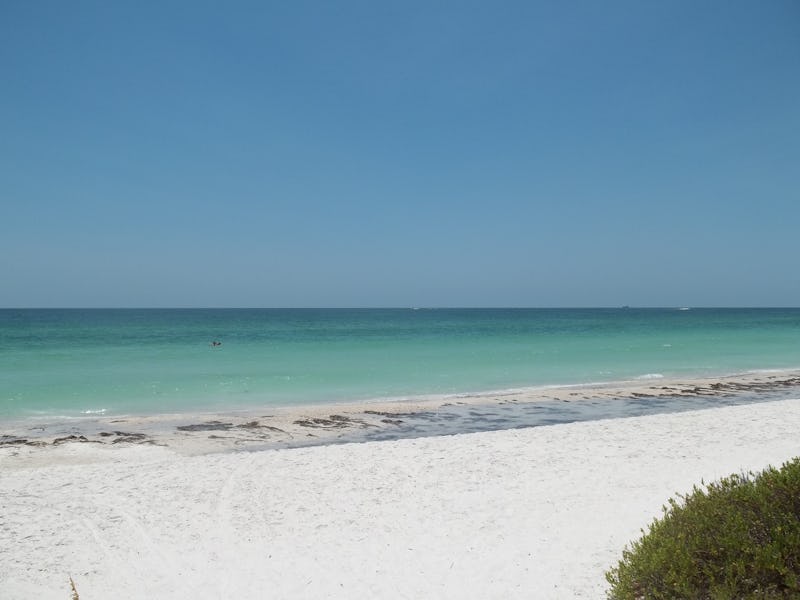Why Quartz Crystal Is the Best Type of Sand
Just add millions of years.

The sand at Siesta Beach in Sarasota, Florida, is so fine that when you walk on it, it squeaks. The faint, high-pitched noise is the sound of the tiny mineral particles rubbing against each other, like tracing a finger around the edge of a crystal wine glass.
Florida beaches like Siesta are famed for their white, powdery, soft sand. This is the best beach sand in the world, Stephen Leatherman tells Inverse. Leatherman is a coastal scientist with Florida International University, and since 1991 he has released rankings of the best beaches in the United States. Siesta Beach took the 2017 title.
“People like the finest, whitest sand possible,” he says. “It just feels so good to walk on it. If you wear your shoes on that beach, you’re not getting the full experience.
Sand is defined not by what it’s made of but by its size. It’s mineral material that’s too small to be gravel, and too big to be silt. Hawaii produces volcanic rocks that come in hues of green, red, and black, making for stunning, exotic beaches that tourists go to great effort to visit and photograph. Okinawa, Japan, boasts beaches made of the shells of microscopic organisms in the Foraminifera family; look closely, and it appears that the sand is a collection of tiny stars.
Black sand beaches, like this one in Iceland, are typically produced though the erosion of volcanic rock.
Exotic beach sands can be amazing, but in terms of the sand that looks and feel best to the greatest number of people, the fine, white stuff still wins. It’s not just a matter of aesthetics, there’s a practical concern, too. The whiter the sand is, the less heat it will hold and the cooler it will feel. Good luck trying to walk barefoot on a black beach on a hot day. “Boy, I tell you,” says Leatherman, “you step on it in the summertime — unless you’ve got on sandals, you’re going to burn your feet off.”
Here’s the secret of Siesta Beach’s perfect sand: It is almost 100 percent pure quartz crystal, with each grain of nearly identical size. Its chemical composition — silicon dioxide — is the same as that crystal wine glass, as if it had been ground down to a very fine powder.
The sand at Pismo Beach, California, has got a lot going on.
Most beaches are not purely anything. They are typically made of a mix of minerals from the surrounding rocks and shell fragments from nearby sea creatures. But Florida’s sand is special. It is made of rock from the Appalachian mountains that flowed in mighty rivers to the Gulf of Mexico millions of years ago. Over time those rivers shifted course and left Florida with no new source of sand. But the sand that was already there tossed and churned in the tides and waves until everything eroded away into silt and flushed out to sea except the hardiest material: the quartz crystal.
Quartz is the strongest and hardest common material on the planet, and it becomes stronger still when it reaches what Leatherman calls its “terminal size” — a very tiny crystal that, because of its geometry, is extraordinarily resistant to weathering. “iI will not break down chemically or physically unless you put it on an anvil and hit it with a hammer, and nature can’t do that,” he says.
And that’s how the best beach sand in the world is made — slowly, over millions of years of geological movement, where no new material is laid down and most of the old material wears away. It’s an extraordinary thing and a finite resource. We cannot easily or cheaply replicate the work of eons of wave action on rock.
No wonder there are sand wars in Florida, fought over who can access this resource, which is depleting thanks to the rising seas and bigger storms brought on by climate change. For now, Siesta Beach remains open; the sand is cool, the water’s warm, and the view is spectacular.